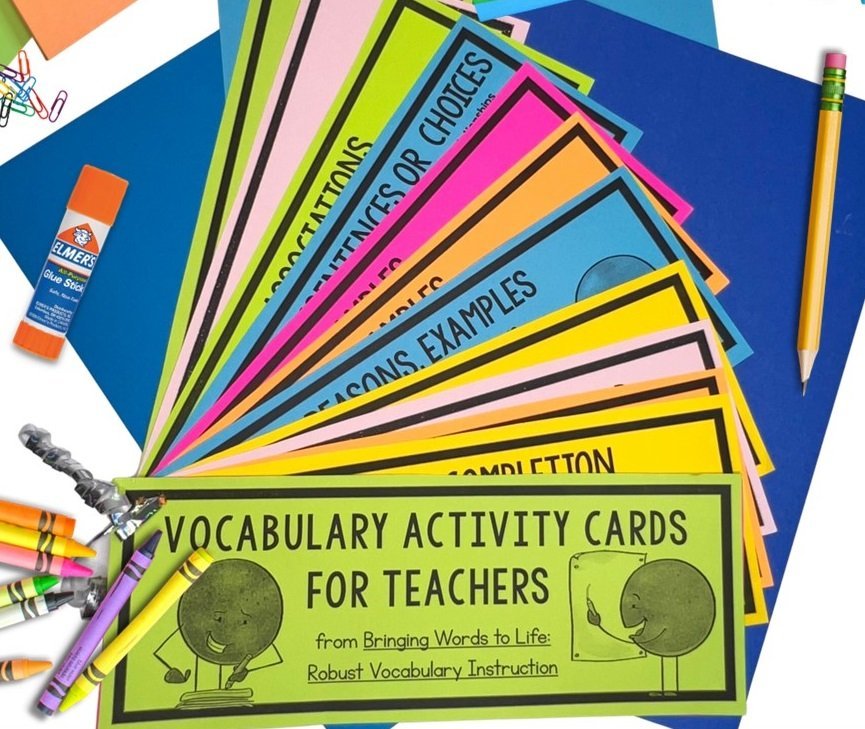
Characterization is one of my favorite skills to teach. Let’s face it. In what other way can you be a teacher like Miss Nelson, live on a farm like Fern, or survive a plane crash like Brian? It is with characters that our students are able to use their imagination and just get lost in a book. When we think of our favorite books, the characters are what come to mind, and that’s because great books have well developed characters.
Characterization components:
As we teach characterization, we typically focus on the characters thoughts, feelings, actions, and words to determine character traits. When we are determining character traits, we are essentially using the text evidence to help us make inferences about the type of person the character is.
For many students, this skill builds vocabulary knowledge too. Nearly all students could select a hero or villain, and they could most likely identify them as happy, sad, mad, or kind. As we delve into characterization more deeply though, vocabulary lags can make identifying the correct trait challenging.
As I teach character traits, I usually provide a character traits sheet as a reference like the one below for my students to keep in their interactive notebooks. This familiarizes students with the more challenging vocabulary with repeated discussions.
Characterization includes character change

In addition to learning about traits, we also ask students to observe how the characters change through time. Characters are typically not static, but are rather dynamic, changing across the story plot. It is important that students record evidence during their reading, and this organizer may help your readers too. It comes from Ms. Sanchez’s Fourth Grade website. I love how it ties to the plot events.
support to help students with characterization
I have also used this organizer with my students when we’ve just focused on Character Traits. You can use this with any text, and when I’m modeling, I often project this organizer and record our thinking and on it as I share a favorite mentor text with a strong character.

In reading Comprehension Connections, one recommended technique for skill instruction is to post leading questions for student to think about as they work on the skill. You might give these questions stems to guide student thinking.
questions to support characterization
- How does the character change in the story?
- How are the two characters different in the way that they do ____?
- How did the character’s actions make him/her a very important person in the story?
- Which phrase best describes the character?
- What does the character do to make you think he/she is ____?
- What does the character say to make you think he/she is ____?
- How do you think the character feels about ____?
Now that I’ve shared a few ideas on characterization, I will move to the fun part…mentor texts. When selecting a mentor text for characterization, you want a book that has a strong character or two. There are so many wonderful options, so narrowing the list is truly impossible. I decided to include a variety because the choice depends upon the grade level and your students interests.
OTHER POSTS ABOUT CHARACTERIZATION YOU MIGHT LIKE:
- EASY WAYS TO TEACH CHARACTERIZATION IN LESS TIME!
- EXPLORING CHARACTERIZATION WITH STREGA NONA AND BIG ANTHONY
- HOW TO TEACH CHARACTERIZATION WITH LILLY’S PURPLE PLASTIC PURSE
Below, I featured four titles: The Library Dragon, Strega Nona, Jamie O’Rourke and the Big Potato, and Amazing Grace. Check out these resources to use with each.
-
Sale Product on saleJamie O’Rourke Book Companions Bundle
$10.00Original price was: $10.00.$6.00Current price is: $6.00.
-
Sale Product on saleStrega Nona by Tomie DePaola Literacy Bundle in Digital and PDF
$24.95Original price was: $24.95.$20.49Current price is: $20.49.
In addition to these great titles for characterization, I also offer this fun characterization project. Students get to work through instructional pages, guided practice, and application to new reading. Teachers really like this project and here’s what one had to say about it.
“I just watched your amazing video about this resource and can’t wait to use this with my daughter. Amazing Grace is one of our favorite books, and the way you presented the lesson will help make it meaningful as we work on characterization this week. I am going to check out your other paper bag books now.”
What are your favorite books for teaching this skill? Share them in the comments.






















4 Responses
I used Amazing Grace on my post! I love the question stems you posted to get the kids thinking. Thanks for sharing!
Krista
Teaching Momster
Carla, I agree, there were so many excellent choices for teaching characterization. Your selections were perfect! The graphic organizers you provided will be useful for students to organize their thinking about the characters. Thanks for linking up.
🙂 Wendy
Read With Me ABC
You're welcome. I'll come and check it out, Krista! I love that book!
You're welcome, Wendy! I know Emily appreciates the help, too.